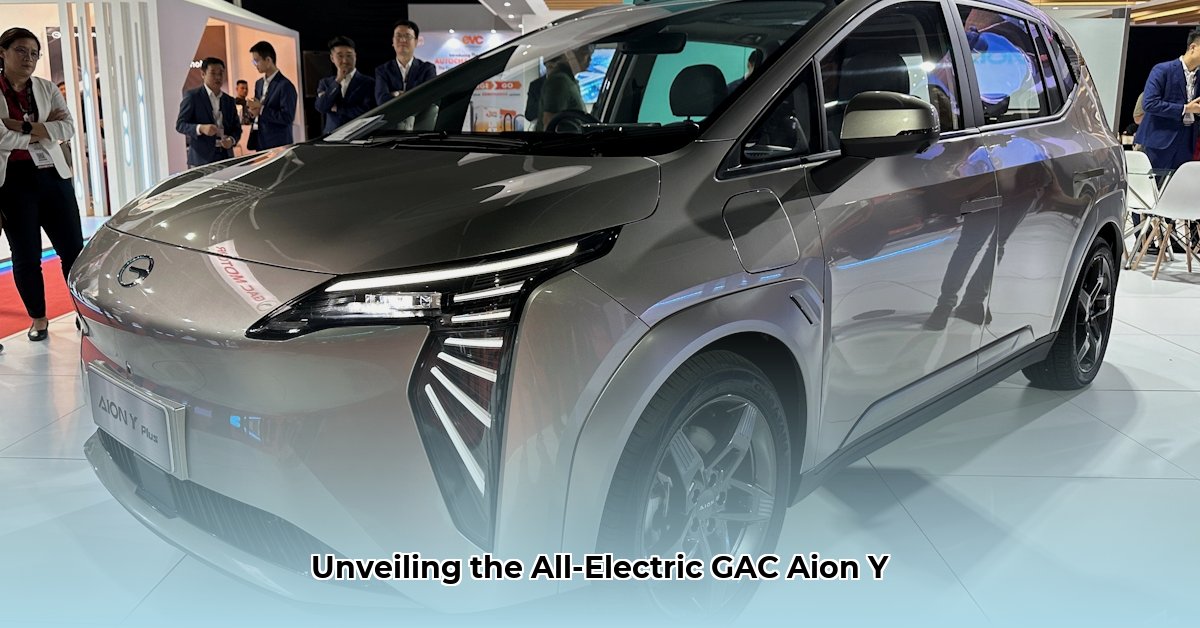
Technical Specifications and Comparisons
The GAC Aion Y is a compact electric SUV entering a fiercely competitive market. Its key selling points are its affordability and respectable range, powered by a Lithium Iron Phosphate (LFP) battery. However, inconsistencies exist in reported specifications, requiring careful analysis. Different sources cite varying power outputs for the motor; one source claims approximately 100 kilowatts, while another reports a substantially higher 135 kW (around 181 horsepower). This discrepancy needs clarification for an accurate assessment of performance. The claimed range under the NEDC (New European Driving Cycle) is 490 kilometers (approximately 304 miles), but real-world range will vary based on driving conditions. Standard safety features include multiple airbags, anti-lock brakes (ABS), electronic stability program (ESP), and electronic brakeforce distribution (EBD). Some sources mention a "Magazine Battery" design, promising enhanced thermal stability and safety, though this isn't consistently reported.
Is the reported range sufficient for your daily commute and longer trips? What's the impact of the uncertain power output on acceleration and overall driving experience?
A key feature is the LFP battery, frequently chosen for its cost-effectiveness. However, potential long-term effects on battery degradation and range retention require further scrutiny. How does the LFP battery’s lifespan compare to other battery chemistries used in competing vehicles?
The following table compares the Aion Y to key competitors. Note that specifications may vary based on trim levels and region. Further data collection is needed to fill in the gaps and verify the accuracy of existing information.
| Feature | GAC Aion Y (Estimated) | MG ZS EV | Hyundai Kona Electric |
|---|---|---|---|
| Power (kW) | 100-135 (Unconfirmed) | Varies | Varies |
| Range (km) | ~490 (NEDC) | Varies | Varies |
| Battery Type | LFP | Varies | Varies |
| Price (USD) | To be determined | Varies | Varies |
Performance and Driving Experience
The conflicting power figures hinder a precise prediction of the Aion Y's driving experience. A higher horsepower rating would translate to quicker acceleration and improved responsiveness. However, independent verification of the power output is crucial for objective evaluation. Beyond power, factors like the panoramic sunroof and adjustable seats contribute to overall comfort. Early independent reviews will be vital in providing a more complete picture of the driving experience and addressing the inconsistencies in power output reporting.
Driving range is critical for EV adoption. How does the Aion Y's reported range compare to your average daily driving needs, factoring in weather and terrain?
Features and Technology
The Aion Y features a user-friendly infotainment system, which is expected to include smartphone integration and navigation. Specific features will depend on the trim level. Advanced Driver-Assistance Systems (ADAS) such as lane keeping assist and adaptive cruise control are likely to boost safety and convenience, though details need confirmation. The inclusion of features like heated seats remains unclear and requires further investigation. The user experience of the infotainment system also awaits independent assessment.
What features are non-negotiable for you in an electric vehicle? Does the Aion Y's reported feature set meet your expectations?
Market Analysis and Competitive Landscape
The Aion Y’s market success depends on its pricing and competitive positioning. Cost-effective pricing is crucial, particularly against established competitors like the MG ZS EV and Hyundai Kona Electric. The availability of charging infrastructure is another significant factor in EV adoption. The utilization of LFP batteries offers cost advantages, but potential long-term impacts on performance and range retention need careful consideration.
"The Aion Y's success hinges on its ability to offer compelling value while addressing consumer concerns about battery technology and range," says Dr. Anya Sharma, Professor of Automotive Engineering at the University of Michigan.
Risk Assessment and Regulatory Implications
Several factors could affect the Aion Y's success. The most critical is the disparity in reported engine power, demanding urgent clarification to prevent consumer misinformation. The long-term performance and battery degradation of the LFP battery system require extensive real-world testing. Competition and charging infrastructure also pose substantial challenges.
Conclusion
The GAC Aion Y presents a potentially attractive option in the compact electric SUV segment, primarily due to its affordability and reasonable range. However, inconsistencies in reported specifications, particularly the motor power output, demand further investigation. The LFP battery technology might prove cost-effective, but potential long-term performance impacts need careful assessment. Potential buyers should conduct thorough research, compare specifications across multiple sources, and consider their individual needs before making a purchase decision.